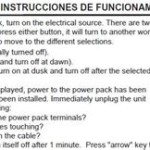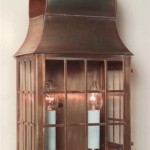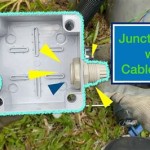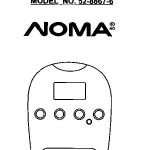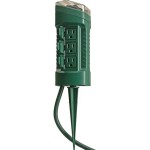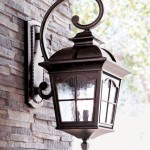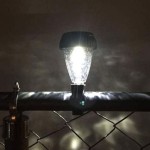Types of Polycarbonate Outdoor Lighting Materials
Polycarbonate is a versatile thermoplastic polymer widely utilized in outdoor lighting applications due to its exceptional impact resistance, transparency, and weatherability. Its inherent properties make it a superior alternative to glass and acrylic in demanding environments, offering enhanced safety and prolonged lifespan for outdoor lighting fixtures. Choosing the appropriate type of polycarbonate for a specific outdoor lighting application is crucial for optimizing performance and ensuring durability.
Understanding the different types of polycarbonate and their respective characteristics allows manufacturers and consumers to make informed decisions based on the specific requirements of the lighting project. This article will explore the various types of polycarbonate materials used in outdoor lighting, highlighting their key features and suitable applications.
Understanding Polycarbonate Properties for Outdoor Lighting
Before delving into specific types, it is important to understand the core properties of polycarbonate that make it suitable for outdoor lighting. These properties directly influence the performance and longevity of the lighting fixtures.
Impact Resistance: Polycarbonate possesses exceptionally high impact resistance, making it virtually shatterproof. This property is critical for outdoor lighting, which is often exposed to harsh weather conditions, vandalism, and accidental impacts. Unlike glass, polycarbonate will not easily break, reducing the risk of injury and maintenance costs.
Transparency: Polycarbonate offers excellent light transmission, comparable to glass. This allows for efficient illumination and optimal light output from the lighting fixture. Its transparency remains stable over time, resisting yellowing or clouding even after prolonged exposure to sunlight.
Weatherability: Polycarbonate exhibits good resistance to UV radiation, rain, snow, and temperature fluctuations. UV stabilizers are often added to the polycarbonate resin to further enhance its resistance to degradation from prolonged sunlight exposure. This ensures that the material retains its clarity, strength, and appearance over its service life.
Temperature Resistance: Polycarbonate can withstand a wide range of temperatures, from very cold to moderately hot, without significant changes in its properties. This makes it suitable for use in various climates and environments. Polycarbonate can generally withstand temperatures from -40°C to 120°C depending on the specific grade and formulation.
Lightweight: Compared to glass, polycarbonate is significantly lighter, which simplifies installation and reduces the structural load on mounting structures. This is particularly important for large outdoor lighting fixtures or those installed on tall poles.
Design Flexibility: Polycarbonate can be easily molded into complex shapes and designs, allowing for greater flexibility in lighting fixture design. This allows manufacturers to create aesthetically pleasing and functional lighting solutions.
Types of Polycarbonate Resins Used in Outdoor Lighting
Polycarbonate is a versatile material, and different formulations and processing techniques result in a variety of types, each with specific characteristics. These include general-purpose polycarbonate, UV-stabilized polycarbonate, and abrasion-resistant polycarbonate.
General-Purpose Polycarbonate: This is the most common type of polycarbonate and is used in a wide range of applications. It offers a good balance of impact resistance, transparency, and heat resistance. While suitable for some outdoor lighting applications, it may not be the best choice for environments with high UV exposure without additional treatment or protective coatings.
UV-Stabilized Polycarbonate: This type of polycarbonate is formulated with UV-absorbing additives that protect the material from degradation caused by prolonged exposure to sunlight. These additives prevent yellowing, cracking, and loss of impact strength. UV-stabilized polycarbonate is essential for outdoor lighting applications where the fixture will be constantly exposed to direct sunlight. Different levels of UV stabilization are available, depending on the intensity of UV radiation in the intended environment.
Abrasion-Resistant Polycarbonate: While polycarbonate is generally durable, it can be susceptible to scratching and abrasion. Abrasion-resistant polycarbonate is coated with a special hard coating that significantly improves its resistance to scratches and scuffs. This is particularly important for outdoor lighting fixtures that are exposed to dust, sand, and other abrasive elements. These coatings maintain the clarity and aesthetic appearance of the lighting fixture over time.
Flame-Retardant Polycarbonate: In some applications, particularly those near flammable materials or in public spaces, flame-retardant polycarbonate is required. This type of polycarbonate is formulated with additives that reduce its flammability and prevent the spread of fire. These materials are important for safety and compliance with building codes.
Tinted and Colored Polycarbonate: Polycarbonate can be tinted or colored to provide specific lighting effects or to match the aesthetic of the surrounding environment. Different colors can be used to enhance visibility, create ambiance, or provide wayfinding cues. The coloring process involves adding pigments to the polycarbonate resin during manufacturing.
Impact-Modified Polycarbonate: This type of polycarbonate has enhanced impact resistance compared to general-purpose polycarbonate. It is modified with additives that increase its toughness and ability to withstand severe impacts. While all polycarbonates are inherently impact resistant, impact-modified versions provide an extra level of protection for high-risk applications.
Applications of Different Polycarbonate Types in Outdoor Lighting
The choice of polycarbonate type depends heavily on the specific application and the environmental conditions to which the lighting fixture will be exposed. Selecting the appropriate material ensures optimal performance, durability, and safety.
Street Lighting: Street lighting fixtures are constantly exposed to sunlight, rain, snow, and temperature fluctuations. UV-stabilized polycarbonate is essential for these applications to prevent yellowing and degradation of the lens or diffuser. Impact resistance is also crucial to protect the fixture from vandalism and accidental impacts. Both clear and diffused options can be used depending on the desired light distribution.
Security Lighting: Security lighting fixtures often require high levels of impact resistance to deter vandalism and protect the light source. Impact-modified polycarbonate with a UV-stabilized coating is a good choice for these applications. In some cases, flame-retardant polycarbonate may also be required.
Pathway Lighting: Pathway lighting fixtures can benefit from the design flexibility of polycarbonate, allowing for the creation of aesthetically pleasing and functional lighting solutions. Depending on the environment, UV-stabilized polycarbonate may be necessary. Abrasion-resistant polycarbonate can be used in areas with high foot traffic or exposure to dust and debris.
Landscape Lighting: Landscape lighting fixtures often require a material that can blend seamlessly with the surrounding environment. Tinted or colored polycarbonate can be used to achieve specific lighting effects or to match the aesthetic of the landscape. UV-stabilized polycarbonate is important for fixtures that are exposed to direct sunlight. Smaller, more decorative fixtures might use standard polycarbonate, while larger, more exposed fixtures typically require UV-stabilized or impact-modified versions.
Parking Garage Lighting: Parking garage lighting fixtures are exposed to harsh conditions, including vehicle exhaust, dust, and potential impacts. Abrasion-resistant polycarbonate is essential to maintain the clarity of the lens or diffuser. Impact-modified polycarbonate can provide added protection against accidental damage.
Signage Lighting: Polycarbonate is widely used in illuminated signage due to its transparency, impact resistance, and weatherability. UV-stabilized polycarbonate is crucial to prevent yellowing and fading of the sign over time. Colored polycarbonate can be used to create vibrant and eye-catching signage.
Emergency Lighting: Emergency lighting fixtures require high reliability and durability. Flame-retardant polycarbonate is often required to ensure safety in the event of a fire. Impact-modified polycarbonate can provide added protection against damage.
Proper maintenance of polycarbonate outdoor lighting fixtures is also important to ensure their longevity and performance. Regular cleaning with mild soap and water can help to remove dirt and debris that can accumulate on the surface. Avoid using harsh chemicals or abrasive cleaners, as these can damage the polycarbonate material.
In conclusion, selecting the right type of polycarbonate for outdoor lighting applications involves considering the specific environmental conditions, the desired performance characteristics, and the aesthetic requirements of the project. By understanding the different types of polycarbonate and their respective properties, manufacturers and consumers can make informed decisions that ensure optimal performance, durability, and safety of outdoor lighting fixtures. The specific blend of properties needed will dictate the proper selection and will contribute to the long-term viability of the outdoor lighting installation.

The Top 4 Daylight Roofing Options For Your Home Palram Industries Ltd

Light Diffusing Plastics S For Lighting Curbell

5 Types Of Polycarbonate Sheet Unq

Polycarbonate Roofing Sheets The Perfect Combination Of Coverings And Natural Light Palram Industries Ltd

Polycarbonate Patio Covers Everything You Need To Know About Them

Duroplastic Profiled Polycarbonate

The Difference Between Types Of Plastic Sheets Sheet Plastics

Suntuf Corrugated Polycarbonate Panels Diy Outdoor Roof

Custom Polycarbonate Sheets Cut To Size Tap Plastics

Polycarbonate Sheets The Ultimate Building Material Danpal
Related Posts
